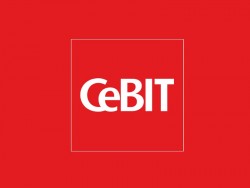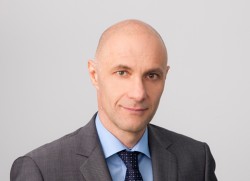the “Grande Dame” of IT fairs, the CeBIT , with her fair motto are all those orientation who want to know which top issue the industry moves. For the second year in a row, it is the broad term “d conomy” – the digital economy. This illustrates the importance of the topic digitization and shows that this is the largest enterprise and very individual challenge. After digitization at Bosch is different from Siemens, is unlike Trump and unlike Karstadt.
‘);}googletag.cmd.push(function(){googletag.display(“div-gpt-ad-DESKTOP_IN_ARTICLE-0″);});document.write(‘
‘);}})(jQuery);  Once again this year is the digitizing the dominant theme at CeBIT. The world’s largest IT trade fair will take place from 14 to 18 March in Hannover (Picture: CeBIT)
Once again this year is the digitizing the dominant theme at CeBIT. The world’s largest IT trade fair will take place from 14 to 18 March in Hannover (Picture: CeBIT)
The IT of the past two decades was in the company of the question “How do I run. IT software? “marked by a rod. CIOs were primarily engaged in standard software – -einzuführen as an ERP system. This core software systems needed to be implement, harmonize and operate efficiently. The basic principle here: A system, a database, and the entire business processes run across this central, monolithic application. With the advent of the first cloud provider you have already guessed that this approach will overtake. With standard software is not differentiated from the competition. Then entered other trends, such as mobile applications and resulted in the Internet of Things together with its flood of data that stage. The catch is that the still predominant monolithic IT structure can not support the digitization, but the companies themselves and their business models have to constantly change. The “two-class society” of enterprise IT was born.
 Dr. Wolfram Jost, CTO Software AG: “Without software no business – a simple mantra that every CEO and CIO should bear in mind today repeatedly. (Image: Software AG)
Dr. Wolfram Jost, CTO Software AG: “Without software no business – a simple mantra that every CEO and CIO should bear in mind today repeatedly. (Image: Software AG) Without Software no business – a simple mantra that every CEO and CIO should bear in mind today again. But many companies have to develop and implement the wide sheeted standard software in recent years, the know-how, innovative and differentiating software systems lost. Instead, they have tried to reflect innovations from external software manufacturers. But today, the future is not predictable – so there is not even innovations of the rod. The thought “We now carry out a large IT project and have then digitized” does not work. In a world where the customer all the information at any time and have available at virtually any location on a button, a single, previously best competitive advantage is no longer enough in the business world. Only those who manage the sales approach tailored individually and flexibly, can be found in a world of information abundance hearing. For this, IT must be as flexible and mobile as the clientele. The technological foundation for this can only form an agile software platform. While a rigid software product ready for use and is supplied with ready-made data and processes, provides a platform flexible digital capabilities that help companies tailor design their custom business logic, implement, monitors, and can manage – regardless of the ever-changing business idea. ” / p>
from data recoup business ideas – fast and with the right tools
at the beginning of such an idea is always analyzing the masses of available data and the existing Customer Experience. From the digital strategy is derived. It follows the design of the digital business model, the digital “roadmap” with the milestones that must be achieved. Finally, it comes to the implementation, execution and control of the digital strategy. these various stations are supported by an IT, which is the opposite of ERP systems: it is agile and integrates the disruptive technology trends Social, Mobile, Cloud and Big Data. In addition, it is based on modern architecture principles, which NoSQL, Micro Services, Container Management, Cloud, Mobile, In-Memory and SOA include
A typical stumbling block in this way. Companies take usually before more than they realize can. Start euphoric, then launched but quickly to the limit of realizable. Hence the motto “less is more”. Let us take an example of the start-ups in Silicon Valley. The successful ones have one thing in common: They begin with a clear focus on the economically viable product. The point is not to paint the great vision on the wall and then to work for five years on it until perhaps have changed the conditions. It is important to have a vision that leads to incremental steps to success. Speed is more important more important than control and agility as predictability. It comes quickly implement things, to gain experience and, armed with this knowledge, to respond again soon.
Innovations must return to the company
The digitization is a great challenge – but it can be mastered. However, not standardization, but about individuality and differentiation. The IT is the central business enabler and entrepreneurs again the IT expertise to build what they have been trying for many years to reduce by outsourcing. What is needed is a co-innovative approach that combines the knowledge of IT professionals with the expertise of business leaders. This promoted the right decisions to light and supports pioneering, digital business ideas that comprehend the constant change as an opportunity.
Dr. Wolfram Jost …
… is 2010 Member of the Board, Software AG and responsible for research and development since August. He is the author of numerous professional and magazine articles, as well as (co) authored more than ten books. Until the acquisition by Software AG Dr. Jost was a board member of the IDS Scheer AG in 2000.
No comments:
Post a Comment